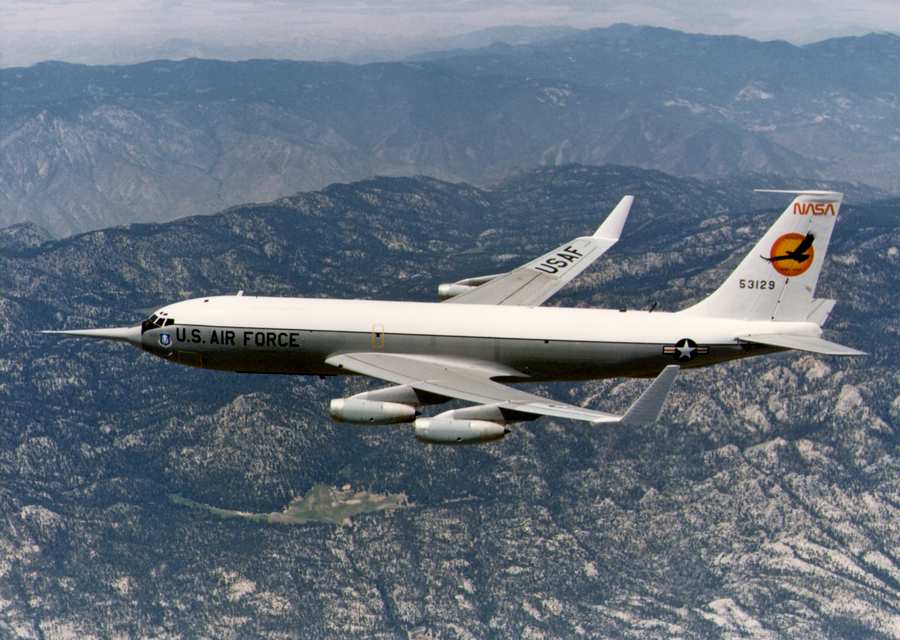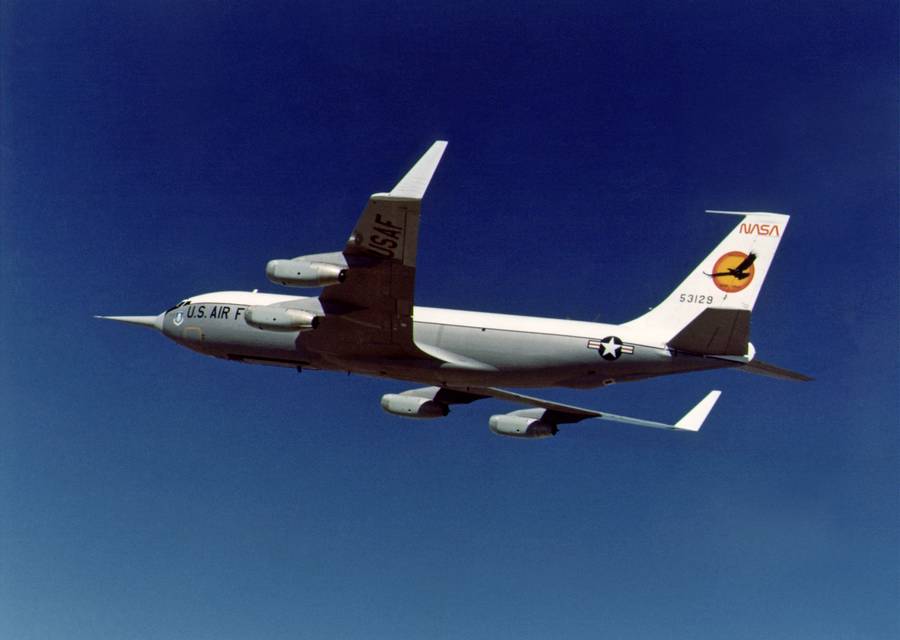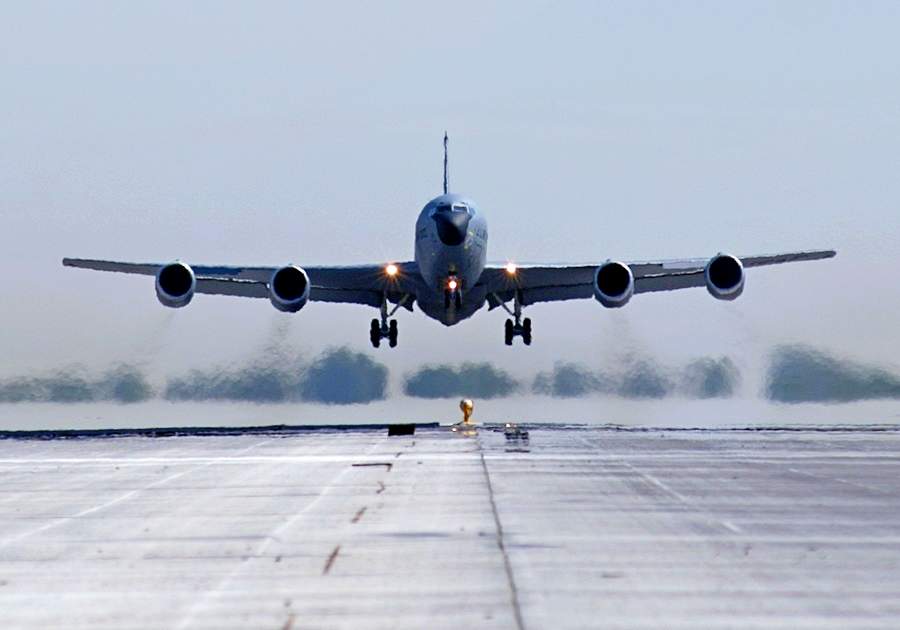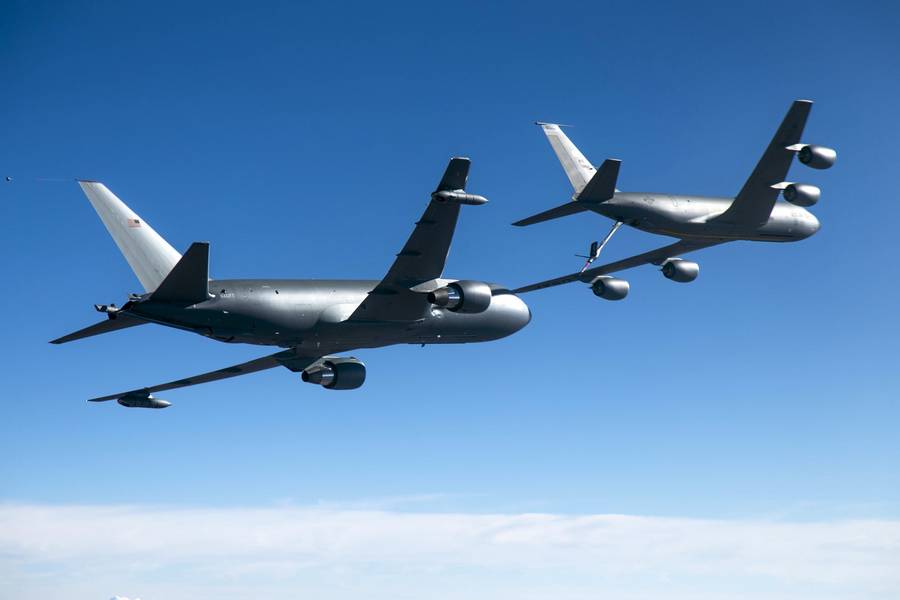At least some of the KC-135 aerial refueling tankers of the U.S. Air Force are about to get winglets. Which makes sense – but invites some questions!
It was The Drive that first picked up this story, back in March. It appears that the Air Force has already added this program to its budget. The number of aircraft that would get the winglets isn’t clear yet. But if everything goes to plan, the Air Force believes that it could save $35-56 million per year, assuming that all of its KC-135 tankers get these winglets.

These savings are relatively modest, however. The Air Force actually tested a KC-135 with winglets, way back in the 1970s and 80s. This was a joint program with NASA and Boeing, and it aimed to explore winglets for both commercial and military use. It produced very encouraging results, with the aircraft’s fuel burn improving by around 6.5%.
A More Clever Winglet Design?
But the Air Force’s aircraft never got this modification. Instead, the Air Force adopted other means of managing fuel planning for its fleet. And at around that time, the KC-135 fleet was getting re-engined, with CFM-56 turbofans, which undoubtedly saved more fuel. But it is somewhat strange that the Air Force didn’t revisit the winglet idea since.

However, there is a clue about this in the Air Force’s latest plans – specifically in their fiscal request. The winglets that the Air Force wants for its KC-135s will use an Active Load Alleviation Control System (ALACS). This is an extension of the wing itself, which includes a passive aerodynamic control surface, that looks like an aileron. As its name suggests, the role of this surface is to alleviate the structural loads that the winglet imposes on the wing.
To install winglets on that old KC-135 back in the 1970s, NASA and Boeing would have had to strengthen the structure of the wing itself. This adds some weight, complexity, and most importantly, cost. The ALACS system eliminates the need for such wing strengthening, reducing the installation cost of retrofitting winglets to the entire Air Force KC-135 fleet.

Air Force Tankers And Winglets – What About The KC-46?
Active winglets have been available for some business jets for a few years. But their introduction has been a mixed affair, with at least one possible in-flight failure (the investigation is ongoing). But the Air Force’s decision to pursue such a modification seems strange for a different reason.

The KC-135 is the oldest of the three air refueling tankers that the Air Force uses. USAF’s newest Air Force tanker is the KC-46 – and it doesn’t have winglets, either. This aircraft is a variant of the 767, which has had winglets for quite some time now. Initial renderings of a 767-based tanker for the U.S. Air Force showed it with winglets.
These winglets didn’t make it on the KC-46, but the Air Force apparently wants to retrofit them to it now. Its wing likely has the structure to handle them, so this retrofit should be easier and simpler than the KC-135’s. To some, the decades-old service of the KC-135 and that original study in the 1970s represent a lost opportunity. To be fair, military tankers have to climb and descend more frequently than airliners. So the added weight of winglets penalizes them more than the airliners…




3 comments
Petter
I really like this article. Nicely and clearly explained Spyros!
Marco
Not bad. Let’s test these comments.
Marco
Hello, this is pretty cool.